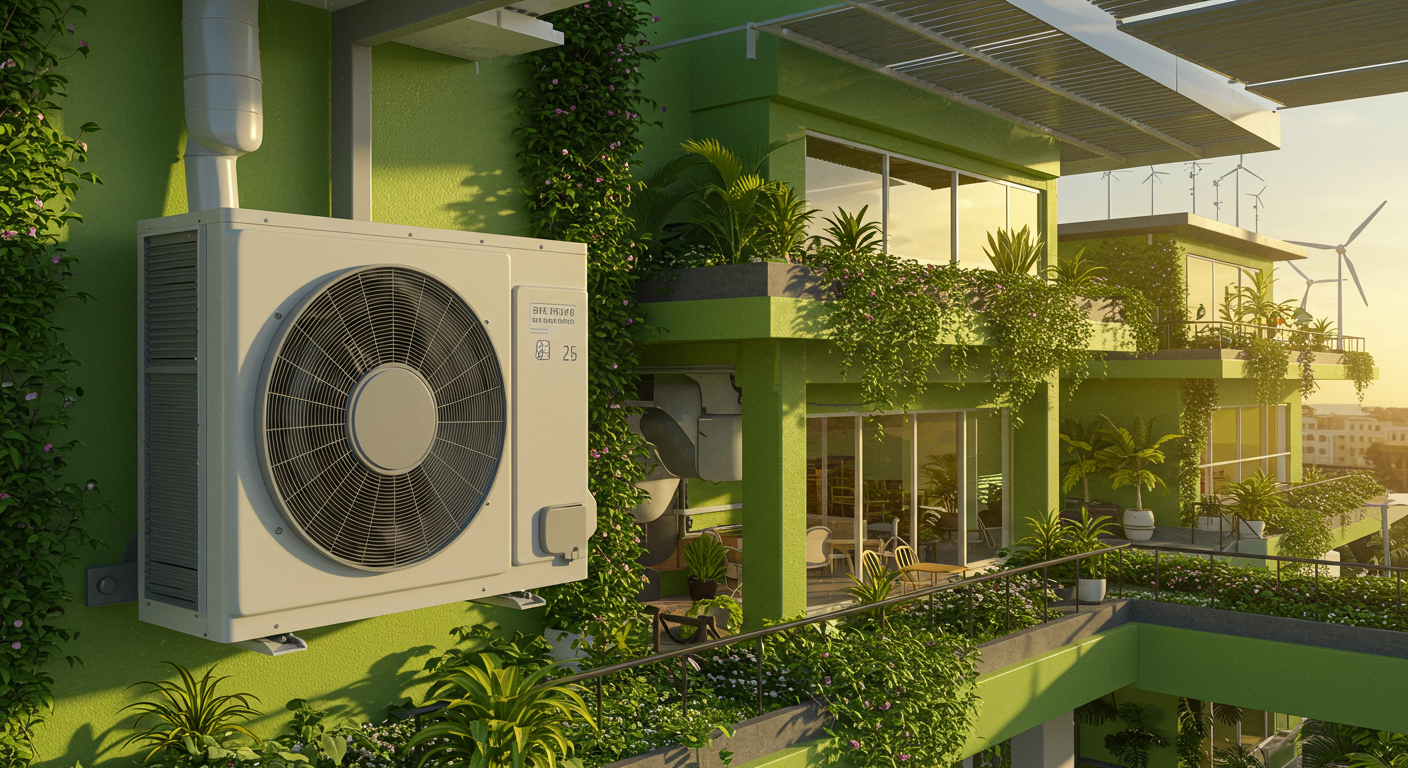
The Path to Sustainable Cooling: Your Guide to a Cooler Future
As the world heats up, the demand for cooling solutions is set to triple by 2050. This surge presents a significant challenge: the potential doubling of emissions to 7.2 billion tonnes CO₂e. But don’t worry, there’s a path forward—a path to sustainable cooling that can transform how we keep our spaces comfortable and our planet healthy.
Understanding the Global Cooling Pledge
The Global Cooling Pledge is a commitment to reduce cooling-related greenhouse gas emissions by 68% by 2050 compared to 2022 levels. This ambitious target aims to lower emissions from 4.1 billion tonnes CO₂e in 2022 to just 1.3 billion tonnes by 2050. How will this be achieved? By increasing the average efficiency of new air conditioners by 50% and expanding access to sustainable cooling.
Strategies for Achieving Sustainable Cooling
Several strategies are key to achieving these goals. First, adopting high-efficiency equipment, like those offered by Daikin, can significantly cut energy use and emissions. Accelerating the phase-down of HFC refrigerants, as outlined in the Kigali Amendment, is another critical step. Currently, 66 countries have committed to this phase-down by 2024.
The Role of Passive Cooling Measures
Passive cooling measures, such as shading, ventilation, reflective surfaces, and green urban spaces, can reduce indoor temperatures by up to 8°C and cut household energy use by 30% or more. These solutions are crucial for reducing our reliance on active cooling systems and promoting energy-efficient cooling.
Economic and Social Benefits
Following the Sustainable Cooling Pathway could save a staggering $43 trillion in avoided electricity and grid investments by 2050. It could also cut peak power demand by 1.5–2 TW and provide cooling access to an additional 3.5 billion people. This is not just about technology, but also about improving lives, particularly in the Global South, where over 1 billion people currently lack adequate cooling.
- Reduce cooling-related emissions by 68% by 2050
- Adopt high-efficiency cooling equipment
- Implement passive cooling solutions to lower energy use
- Support the phase-down of HFC refrigerants
- Enhance access to cooling for 3.5 billion more people
Embracing Green Cooling Technologies
Green cooling technologies, including renewable energy cooling and super-efficient air conditioning, are pivotal in this transformation. By integrating these technologies with innovative building designs, we can create spaces that are not only cool but also climate-friendly.
Building Design for Sustainable Cooling
Designing buildings with sustainable cooling in mind involves using materials and layouts that maximize natural ventilation and minimize heat gain. This approach, combined with climate-friendly refrigeration and low-carbon cooling systems, can lead to more sustainable urban environments.
FAQs About Sustainable Cooling
What is the Global Cooling Pledge?
The Global Cooling Pledge aims to reduce cooling-related greenhouse gas emissions by 68% by 2050 through enhanced efficiency and sustainable practices.
How can passive cooling solutions help?
Passive cooling solutions like shading and ventilation can reduce indoor temperatures significantly, cutting energy use by up to 30%.
What are the benefits of high-efficiency air conditioning?
High-efficiency air conditioning, such as systems from Daikin, uses less energy, reducing emissions and lowering electricity costs.
How does sustainable cooling impact the economy?
Adopting sustainable cooling methods could save $43 trillion in electricity and grid investments by 2050.
Why is access to cooling important?
Access to cooling is crucial for public health, as it helps prevent heat-related illnesses and deaths, especially in vulnerable regions.
In conclusion, sustainable cooling is not just a necessity but an opportunity to improve our world. By embracing energy-efficient cooling technologies and innovative design, you can be part of this transformation. Let’s make a commitment to a cooler, more sustainable future.
Join the movement towards sustainable cooling today!

